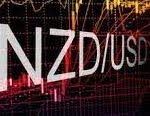
Take the mid 1970s, for example, when the NZ dollar out-flew the US greenback – the big bird of global currencies – by about 50 per cent.
But the days when NZ$1 could purchase US$1.50 are long gone. Since that ‘70s high-point, the Kiwi has plummeted back to earth hitting a low of about US40 cents early this century.
More recently the Kiwi has been flapping around erratically in a broad range of between US50 cents and over US80 cents.
The bizarre, unpredictable flight pattern of the NZ dollar, though, is not just of interest to import/export firms and nerdy currency-spotters: fluttering foreign exchange (FX) movements have an enormous influence on the point-in-time returns for all Kiwi investors with offshore assets.
Essentially, if the NZ dollar climbs then the value of assets denominated in foreign currencies falls – and vice versa.
For those who deal in short-term commodities – including NZ agricultural exporters – those FX effects represent a material risk to the business bottom-line. Many exporters choose to ‘hedge out’ currency uncertainty by buying some form of protection from a bank.
Most commonly NZ exporters will purchase so-called ‘forward contracts’ that lock in an exchange rate at a certain future date.
While hedging out short-term currency risk might seem a sensible strategy for NZ exporters, should Kiwi investors with exposure to global funds worry about it?
For global fixed interest investments, hedging out currency risk ensures that NZ investors enjoy returns that have similar characteristics to investing in local fixed interest assets. This is why all the global fixed interest funds on InvestNow have benchmarks that target being fully hedged to NZ dollars.
For global shares, according to InvestNow founder Anthony Edmonds, opinion is divided on the best currency approach.
“There is a camp of investors that say that over the long term any currency fluctuations for NZ investors in international share funds should even out and hedging is not worth it,” Edmonds says. “Another school of thought is that hedging to NZ dollars has a positive return benefit, which would support fully hedging all international share exposures. As always, there is a camp of pragmatists who take the view that currency is another source of risk – and return – which should be actively managed.”
He says fund managers tackle the hedging conundrum in a number of ways.
“Some offer both unhedged and fully-hedged versions of the same fund – allowing investors to make the currency call,” Edmonds says. “Other managers may actively tweak the FX exposure inside the fund – moving the hedge ratio up or down according to how they expect the NZ dollar to behave in the short term.”
Either strategy might be valid, he says, but international share fund investors should make sure they understand the nuances of their particular exposure to currency risk.
“It might sound dull but investors need to read the fund product disclosure statement (PDS) – right down to the fine print,” Edmonds says. “The PDS will explain whether the manager hedges currency risk and, if so, how it does that.”
Or if investors want to take a position on the Kiwi dollar by purchasing funds clearly labeled as unhedged or fully-hedged, then some background reading might be useful.
Historically hedging global shares currency exposure has mostly worked in the favour of NZ investors.
For example, a recent Mercer study of asset class returns in NZ found currency-hedged international shares outperformed the unhedged variety in eight out of the last 10 years ending December 2017, often by a large margin. Unhedged investors came out ahead only in 2008 and 2016.
But as Edmonds points out, at least some of the hedge success was due to the generally higher interest rates available in NZ over that period.
“Currency hedging is intimately tied to relative interest rates,” he said. “Investors in countries where interest rates are higher than the currencies they’re hedging against earn so-called ‘forward points’, which can boost overall returns. NZ investors have benefited from this over the last decade”
Recently, though, short-term interest rates have converged, with NZ cash rates on parity with their all-important US counterpart (short term interest rates remain in NZ’s favour for areas like the euro and yen, where rates are low). This means the ‘forward points’ premium has diminished significantly in quantum in recent times.
The effect of this could be apparent in returns. According to the Mercer asset class study, in 2017 the return gap between hedged and unhedged international shares was a mere 0.2 per cent for the year. While in future the difference in annual returns for hedged and unhedged global shares will undoubtedly vary significantly in any given year, over the long-term the return gap may be less significant than it has been in the past 10 years – given the lower ‘forward points’ premium that exists today.
Finally, hedging – a kind of insurance policy – does not come for free. For example, InvestNow offers both fully-hedged and unhedged versions of the popular Vanguard International Shares Select Exclusions Index Fund.
The unhedged Vanguard fund costs InvestNow members just 20 basis points (or 0.2 per cent) while the hedged variant adds another 0.06 per cent in fees (for a still-cheap total of 0.26 per cent).
About 17 per cent of InvestNow members have a stake in the Vanguard funds, with the balance tipped slightly in favour of the hedged version (56 per cent).
“The fact InvestNow members are almost evenly-split on the flying Kiwi question shows it’s not an easy one to answer,” Edmonds says. “But it is a question they have to ask.”
